#t-cell receptor
Explore tagged Tumblr posts
Text
Uncle Sam paid to develop a cancer drug and now one guy will get to charge whatever he wants for it

Today (Oct 19), I'm in Charleston, WV to give the 41st annual McCreight Lecture in the Humanities. Tomorrow (Oct 20), I'm at Charleston's Taylor Books from 12h-14h.

The argument for pharma patents: making new medicines is expensive, and medicines are how we save ourselves from cancer and other diseases. Therefore, we will award government-backed monopolies – patents – to pharma companies so they will have an incentive to invest their shareholders' capital in research.
There's plenty wrong with this argument. For one thing, pharma companies use their monopoly winnings to sell drugs, not invent drugs. For every dollar pharma spends on research, it spends three dollars on marketing:
https://www.bu.edu/sph/files/2015/05/Pharmaceutical-Marketing-and-Research-Spending-APHA-21-Oct-01.pdf
And that "R&D" isn't what you're thinking of, either. Most R&D spending goes to "evergreening" – coming up with minor variations on existing drugs in a bid to extend those patents for years or decades:
https://www.ncbi.nlm.nih.gov/pmc/articles/PMC3680578/
Evergreening got a lot of attention recently when John Green rained down righteous fire upon Johnson & Johnson for their sneaky tricks to prevent poor people from accessing affordable TB meds, prompting this excellent explainer from the Arm and A Leg Podcast:
https://armandalegshow.com/episode/john-green-part-1/
Another thing those monopoly profits are useful for: "pay for delay," where pharma companies bribe generic manufacturers not to make cheap versions of drugs whose patents have expired. Sure, it's illegal, but that doesn't stop 'em:
https://www.ftc.gov/news-events/topics/competition-enforcement/pay-delay
But it's their money, right? If they want to spend it on bribes or evergreening or marketing, at least some of that money is going into drugs that'll keep you and the people you love from enduring unimaginable pain or dying slowly and hard. Surely that warrants a patent.
Let's say it does. But what about when a pharma company gets a patent on a life-saving drug that the public paid to develop, test and refine? Publicly funded work is presumptively in the public domain, from NASA R&D to the photos that park rangers shoot of our national parks. The public pays to produce this work, so it should belong to the public, right?
That was the deal – until Congress passed the Bayh-Dole Act in 1980. Under Bayh-Dole, government-funded inventions are given away – to for-profit corporations, who get to charge us whatever they want to access the things we paid to make. The basis for this is a racist hoax called "The Tragedy Of the Commons," written by the eugenicist white supremacist Garrett Hardin and published by Science in 1968:
https://memex.craphound.com/2019/10/01/the-tragedy-of-the-commons-how-ecofascism-was-smuggled-into-mainstream-thought/
Hardin invented an imaginary history in which "commons" – things owned and shared by a community – are inevitably overrun by selfish assholes, a fact that prompts nice people to also overrun these commons, so as to get some value out of them before they are gobbled up by people who read Garrett Hardin essays.
Hardin asserted this as a historical fact, but he cited no instances in which it happened. But when the Nobel-winning Elinor Ostrom actually went and looked at how commons are managed, she found that they are robust and stable over long time periods, and are a supremely efficient way of managing resources:
https://pluralistic.net/2023/05/04/analytical-democratic-theory/#epistocratic-delusions
The reason Hardin invented an imaginary history of tragic commons was to justify enclosure: moving things that the public owned and used freely into private ownership. Or, to put it more bluntly, Hardin invented a pseudoscientific justification for giving away parks, roads and schools to rich people and letting them charge us to use them.
To arrive at this fantasy, Hardin deployed one of the most important analytical tools of modern economics: introspection. As Ely Devons put it: "If economists wished to study the horse, they wouldn’t go and look at horses. They’d sit in their studies and say to themselves, ‘What would I do if I were a horse?’"
https://pluralistic.net/2022/10/27/economism/#what-would-i-do-if-i-were-a-horse
Hardin's hoax swept from the fringes to the center and became received wisdom – so much so that by 1980, Senators Birch Bayh and Bob Dole were able to pass a law that gave away publicly funded medicine to private firms, because otherwise these inventions would be "overgrazed" by greedy people, denying the public access to livesaving drugs.
On September 21, the NIH quietly published an announcement of one of these pharmaceutical transfers, buried in a list of 31 patent assignments in the Federal Register:
https://public-inspection.federalregister.gov/2023-20487.pdf
The transfer in question is a patent for using T-cell receptors (TCRs) to treat solid tumors from HPV, one of the only patents for treating solid tumors with TCRs. The beneficiary of this transfer is Scarlet TCR, a Delaware company with no website or SEC filings and ownership shrouded in mystery:
https://www.bizapedia.com/de/scarlet-tcr-inc.html
One person who pays attention to this sort of thing is James Love, co-founder of Knowledge Ecology International, a nonprofit that has worked for decades for access to medicines. Love sleuthed out at least one person behind Scarlet TCR: Christian Hinrichs, a researcher at Rutgers who used to work at the NIH's National Cancer Institute:
https://www.nih.gov/research-training/lasker-clinical-research-scholars/tenured-former-scholars
Love presumes Hinrichs is the owner of Scarlet TCR, but neither the NIH nor Scarlet TCR nor Hinrichs will confirm it. Hinrichs was one of the publicly-funded researchers who worked on the new TCR therapy, for which he received a salary.
This new drug was paid for out of the public purse. The basic R&D – salaries for Hinrichs and his collaborators, as well as funding for their facilities – came out of NIH grants. So did the funding for the initial Phase I trial, and the ongoing large Phase II trial.
As David Dayen writes in The American Prospect, the proposed patent transfer will make Hinrichs a very wealthy man (Love calls it "generational wealth"):
https://prospect.org/health/2023-10-18-nih-how-to-become-billionaire-program/
This wealth will come by charging us – the public – to access a drug that we paid to produce. The public took all the risks to develop this drug, and Hinrichs stands to become a billionaire by reaping the rewards – rewards that will come by extracting fortunes from terrified people who don't want to die from tumors that are eating them alive.
The transfer of this patent is indefensible. The government isn't even waiting until the Phase II trials are complete to hand over our commonly owned science.
But there's still time. The NIH is about to get a new director, Monica Bertagnolli – Hinrichs's former boss – who will need to go before the Senate Health, Education, Labor and Pensions Committee for confirmation. Love is hoping that the confirmation hearing will present an opportunity to question Bertagnolli about the transfer – specifically, why the drug isn't being nonexclusively licensed to lots of drug companies who will have to compete to sell the cheapest possible version.

If you'd like an essay-formatted version of this post to read or share, here's a link to it on pluralistic.net, my surveillance-free, ad-free, tracker-free blog:
https://pluralistic.net/2023/10/19/solid-tumors/#t-cell-receptors

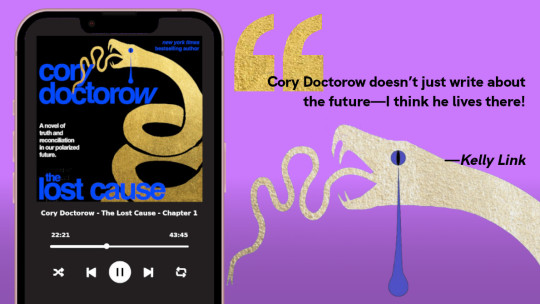
My next novel is The Lost Cause, a hopeful novel of the climate emergency. Amazon won't sell the audiobook, so I made my own and I'm pre-selling it on Kickstarter!
#pluralistic#pharma#incentives dont matter#incentives matter#drugs#uspto#nih#national institutes of health#cancer#patents#kei#knowledge ecology international#james love#jamie love#bayh-dole#bayh-dole act#tcr#scarlet tcr#t-cell receptor#Christian Hinrichs#entrepreneurial state#human papillomavirus#hpv#solid tumors#monopolies
552 notes
·
View notes
Text

#biology memes#studyblr#autoimmunity#i love nerd humor#my creativity peaked at their hair as t cell receptors#anyway studying for finals is going well
19 notes
·
View notes
Text
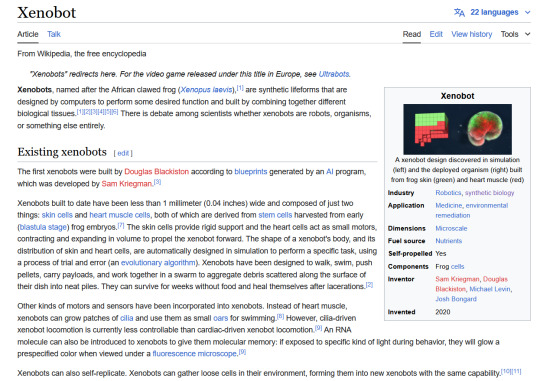
the fact that these things actually exist in real life is so crazy to me .
#reminds me of an article i saw on a newly developed leukemia treatment now being used in nürnberg#where a patients t-cells are filtered out of the blood and then sent to a lab that genetically modifies them#equipping them with a receptor that gives them the ability to recognize and kill cancer cells#and then they're reintroduced to the blood resulting in a 40% increased survival rate for previously hopeless cases. CRAZEYYYYYYY
4 notes
·
View notes
Text
Bioingegneria CAR-T per la lotta ai tumori: i progressi per facilitare il risconoscimento nell'osteosarcoma
L’osteosarcoma è il tipo più comune di cancro alle ossa nei bambini e negli adolescenti. Inizia tipicamente nelle estremità larghe delle ossa lunghe, come le gambe, ma può verificarsi anche in altre ossa, come il bacino e il cranio. Circa il 15-20% dei pazienti con osteosarcoma presenta già una malattia metastatica al momento della diagnosi e meno del 20% di quelli con malattia metastatica o…
#biomedicina#biotecnologie#cell receptor#chemochine#immunoterapia#linfociti T#metastasi#osteoasarcoma
0 notes
Text
Trailblazing Triumphs: CAR T-Cell Therapy Market Successes 2033

In 2022, the global Chimeric Antigen Receptor (CAR) T-Cell Therapy Market was valued at US$ 2.54 billion, and is poised for substantial growth. Forecasts predict that the market will expand to US$ 3.5 billion by 2023 and is projected to reach an impressive US$ 6.82 billion by 2033, maintaining a steady CAGR of 6.9% from 2023 onwards.
This remarkable trajectory is primarily attributed to advancements in technology and the escalating demand for personalized treatment options. Notably, from 2018 to 2022, the CAR T-cell therapy market witnessed a robust growth at a CAGR of 7%.A distinguishing feature of CAR T-cell therapy lies in its remarkable efficacy.
Clinical trials have demonstrated response rates of up to 90% in certain leukemia and lymphoma cases, a substantial leap compared to conventional cancer treatments which typically yield response rates averaging 20-30%.
Click Here to Access Your Visuals-Packed Report!https://www.futuremarketinsights.com/reports/sample/rep-gb-16808
0 notes
Text
Descubren "Interruptor de Apagado" que Puede Desencadenar la Muerte de Células Cancerígenas
Científicos del Centro Integral de Cáncer de la UC Davis en Sacramento, California, han identificado lo que describen como un “interruptor de apagado” capaz de provocar la muerte de las células cancerígenas. Este hallazgo, detallado en un estudio publicado el mes pasado en la revista Cell Death & Differentiation, revela una nueva esperanza en la lucha contra el cáncer. En el estudio, los…

View On WordPress
#Cell Death & Differentiation#Células cancerígenas#Centro Integral de Cáncer de la UC Davis#Ensayos clínicos#Epítopo#Experimento#Inmunoterapia contra el cáncer#Meager success#Potencial terapéutico#Receptor CD95 (Fas)#Receptores de la muerte#Telereald#Terapia de células T CAR (receptor de antígeno quimérico)#Terapias tradicionales contra el cáncer#Tumores sólidos
0 notes
Text
Also preserved in our archive
HIV/AIDS & COVID-19, particularly long COVID, share several significant similarities, especially in terms of viral persistence, T cell damage, immune system dysfunction, & activation of other pathogens. These parallels are important for understanding the long-term effects of both infections and their impact on the immune system.
1. Viral Persistence
Both HIV & SARS-CoV-2 can persist in the body, leading to chronic symptoms & immune system complications. In HIV, the virus establishes reservoirs in various tissues, allowing it to evade immune detection and antiretroviral therapy (ART), leading to lifelong infection. Similarly, recent studies at Brigham and Women’s Hospital suggest that a subset of people with long COVID may harbor persistent SARS-CoV-2 proteins in their blood, potentially explaining ongoing symptoms months after the acute infection has resolved[4][10]. This viral persistence is thought to drive chronic inflammation and immune dysfunction in both.
In long COVID, viral reservoirs have been identified in multiple organs, including the gut, blood, & nervous system[12]. This mirrors HIV's ability to persist in tissue reservoirs such as lymphoid tissues. For both viruses, this persistence can lead to prolonged immune activation & may contribute to ongoing symptoms like fatigue, cognitive issues, & cardiovascular problems.
2. T Cell Damage & Exhaustion
Both HIV and SARS-CoV-2 cause significant damage to T cells, particularly CD4+ T cells. In HIV infection, CD4+ T cells are directly targeted by the virus, leading to their depletion over time and resulting in severe immunodeficiency if untreated. Similarly, severe COVID-19 has been associated with a reduction in CD4+ T cells due to excessive immune activation and exhaustion[1][2]. In both, CD8+ T cells also become dysfunctional due to chronic exposure to viral antigens.
T cell exhaustion is a common feature in both infections. In HIV, chronic infection leads to high levels of inhibitory receptors like PD-1 on T cells, contributing to their reduced functionality[2]. In severe COVID-19 cases, similar markers of T cell exhaustion (e.g., PD-1 and TIM-3) are observed[1]. This exhaustion impairs the body's ability to clear the virus effectively and contributes to prolonged illness.
3. Immune System Dysfunction
Both HIV/AIDS & long COVID can lead to profound immune system dysfunction. In HIV infection, even with effective ART, individuals often experience chronic immune activation and systemic inflammation due to incomplete immune recovery[6][9]. This persistent immune activation is linked to increased susceptibility to other infections and long-term health complications.
Similarly, long COVID is believed to involve ongoing immune dysregulation even after the acute phase of SARS-CoV-2 infection has passed. Some studies suggest that persistent viral proteins may continue stimulating the immune system, leading to chronic inflammation[4][12]. This ongoing immune activation may explain why some individuals experience prolonged symptoms such as fatigue, brain fog, or cardiovascular issues even after clearing the virus from most tissues.
4. Activation of Other Pathogens
Both HIV/AIDS and long COVID are associated with the reactivation of latent pathogens due to weakened immune surveillance. In people living with HIV (PLWH), co-infections with viruses like Epstein-Barr virus (EBV) or cytomegalovirus (CMV) are common due to compromised immunity[7]. Similarly, studies have shown that reactivation of latent viruses such as EBV may contribute to long COVID symptoms[7]
In both conditions, the weakened immune system's inability to control these latent infections can exacerbate symptoms and complicate recovery. For example, EBV reactivation has been linked with neurocognitive symptoms in long COVID patients[7], while opportunistic infections such as Pneumocystis jirovecii pneumonia are common in advanced HIV/AIDS patients[3]
So, HIV/AIDS and long COVID share several key similarities regarding viral persistence, T cell damage, immune system dysfunction, and the reactivation of other pathogens. These shared features highlight the importance of understanding how chronic viral infections can lead to long-term health consequences through mechanisms like persistent viral reservoirs and ongoing immune activation. Insights from HIV research may help inform treatment strategies for long COVID, especially in targeting viral persistence with antiviral therapies or addressing chronic immune dysfunction.
Sources
[1] SARS-CoV-2 and HIV-1: So Different yet so Alike. Immune ... pmc.ncbi.nlm.nih.gov/articles/PMC9608044/
[2] Sharing CD4+ T Cell Loss: When COVID-19 and HIV Collide on ... www.frontiersin.org/journals/immunology/articles/10.3389/fimmu.2020.596631/full
[3] Overview of SARS-CoV-2 infection in adults living with HIV www.thelancet.com/journals/lanhiv/article/PIIS2352-3018(21)00070-9/fulltext
[4] Study Finds Persistent Infection Could Explain Long COVID in Some ... www.massgeneralbrigham.org/en/about/newsroom/press-releases/study-finds-persistent-infection-could-explain-long-covid-in-some-people
[5] New COVID studies show varied viral clearance time in patients with ... www.cidrap.umn.edu/covid-19/new-covid-studies-show-varied-viral-clearance-time-patients-lower-immunity
[6] Immunologic Interplay Between HIV/AIDS and COVID-19 link.springer.com/article/10.1007/s11904-023-00647-z
[7] Long COVID in people living with HIV - PMC - PubMed Central pmc.ncbi.nlm.nih.gov/articles/PMC10167544/
[8] Persistence and Evolution of SARS-CoV-2 in an ... - NCBI www.ncbi.nlm.nih.gov/pmc/articles/PMC7673303/
[9] The immune response to SARS-CoV-2 in people with HIV - Nature www.nature.com/articles/s41423-023-01087-w
[10] Persistent infection could explain long COVID in some people, study ... www.sciencedaily.com/releases/2024/10/241009122346.htm
[11] Plasma-based antigen persistence in the post-acute phase of ... www.thelancet.com/journals/laninf/article/PIIS1473-3099(24)00211-1/fulltext
[12] Long Covid trials aim to clear lingering virus—and help patients in ... www.science.org/content/article/long-covid-trials-aim-clear-lingering-virus-help-patients-need
#mask up#covid#pandemic#public health#wear a mask#covid 19#wear a respirator#still coviding#coronavirus#sars cov 2#hiv/aids#HIV#Aids#aids crisis#long covid#covidー19#covid conscious#covid is airborne#covid isn't over#covid pandemic#covid19#get vaccinated
125 notes
·
View notes
Text
Human Cell Tournament Round 1
Propaganda!
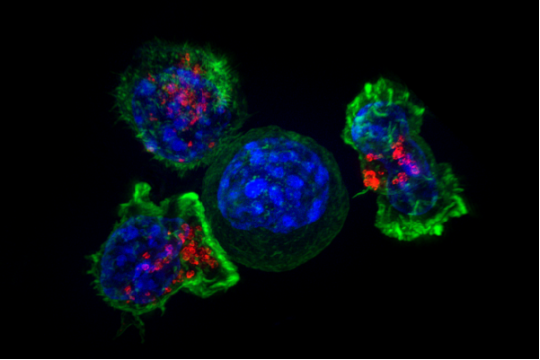

A killer T cell is a T lymphocyte (a type of white blood cell) that kills cancer cells, cells that are infected by intracellular pathogens (such as viruses or bacteria), or cells that are damaged in other ways. Most cytotoxic T cells express T-cell receptors (TCRs) that can recognize a specific antigen. An antigen is a molecule capable of stimulating an immune response and is often produced by cancer cells, viruses, bacteria or intracellular signals. Antigens inside a cell are bound to class I MHC molecules, and brought to the surface of the cell by the class I MHC molecule, where they can be recognized by the T cell. If the TCR is specific for that antigen, it binds to the complex of the class I MHC molecule and the antigen, and the T cell destroys the cell.
In biology, histones are highly basic proteins abundant in lysine and arginine residues that are found in eukaryotic cell nuclei and in most Archaeal phyla. They act as spools around which DNA winds to create structural units called nucleosomes. Nucleosomes in turn are wrapped into 30-nanometer fibers that form tightly packed chromatin. Histones prevent DNA from becoming tangled and protect it from DNA damage. In addition, histones play important roles in gene regulation and DNA replication. Without histones, unwound DNA in chromosomes would be very long. For example, each human cell has about 1.8 meters of DNA if completely stretched out; however, when wound about histones, this length is reduced to about 90 micrometers (0.09 mm) of 30 nm diameter chromatin fibers.
#t4 cells#killer t cells#Hisotones#poll#polls#tumblr poll#tumblr polls#tournament poll#wikipedia#cells of the human body#science tournament#biochemistry
50 notes
·
View notes
Text
The Best News of Last Week - June 6, 2023
1. Biden orders 20-year ban on oil, gas drilling around tribal site in New Mexico
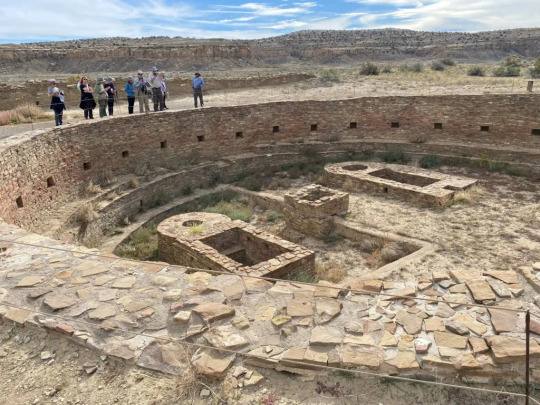
Hundreds of square miles in New Mexico will be withdrawn from further oil and gas production for the next 20 years on the outskirts of Chaco Culture National Historical Park that tribal communities consider sacred, the Biden administration ordered Friday.
The new order from Secretary of the Interior Deb Haaland applies to public lands and associated mineral rights within a 10-mile (16-kilometer) radius of the park. It does not apply to entities that are privately, state- or tribal-owned. Existing leases won’t be impacted either.
2. Groundbreaking Israeli cancer treatment has 90% success rate

An experimental treatment developed at Israel's Hadassah-University Medical Center has a 90% success rate at bringing patients with multiple myeloma into remission.
The treatment is based on genetic engineering technology. They have used a genetic engineering technology called CAR-T, or Chimeric Antigen Receptor T-Cell Therapy, which boosts the patient’s own immune system to destroy the cancer. More than 90% of the 74 patients treated at Hadassah went into complete remission, the oncologists said.
3. Federal Judge Makes History in Holding That Border Searches of Cell Phones Require a Warrant

With United States v. Smith, a district court judge in New York made history by being the first court to rule that a warrant is required for a cell phone search at the border, “absent exigent circumstances”. For a century, the Supreme Court has recognized a border search exception to the Fourth Amendment’s warrant requirement.
4. Indigenous-led bison repopulation projects are helping the animal thrive again in Alberta

Indigenous-led efforts are reintroducing bison to their ancestral lands in Alberta, bringing back an iconic species that was nearly extinct. These reintroduction projects, such as the one led by the Tsuut'ina Nation, have witnessed the positive impact on the bison population and the surrounding wildlife.
The historical decline of bison numbers was due to overhunting and government policies that forced Indigenous peoples onto reserves. These initiatives aim to restore ecological integrity while fostering spiritual and cultural connections with the land and animals. Successful results have been observed in projects like Banff National Park, where the bison population has grown from 16 to nearly 100, providing inspiration for future wilding efforts.
5. Breakthrough in disease affecting one in nine women
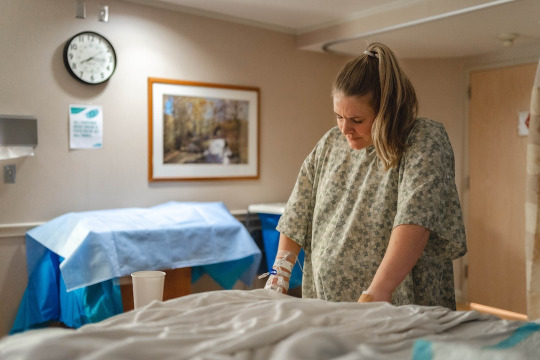
Sydney researchers have made a world-first leap forward that could change the treatment of endometriosis and improve the health of women living with the painful and debilitating disease. Researchers from Sydney's Royal Hospital for Women have grown tissue from every known type of endometriosis, observing changes and comparing how they respond to treatments.
It means researchers will be able to vary treatments from different types of endometriosis, determining whether a woman will need fertility treatments.
6. Latvia just elected the first openly gay head of state in Europe

The country’s parliament elected Edgars Rinkēvičs to be its next president, Reuters reported prime minister Krišjānis Kariņš saying.
Rinkēvičs publicly came out as gay in November 2014, posting on Twitter: “I proudly announce I am gay… Good luck all of you.” In a second tweet at the time, he spoke about improving the legal status of same-sex relationships, saying Latvia needed to create a legal framework for all kinds of partnerships.
7. France bans short haul flights

The introduction of France’s short-haul flight ban has renewed calls for Europe to cut down on journeys that could be made by train. Last week France officially introduced its ban on short-haul flights.
The final version of the law means that journeys which can be taken in under 2.5 hours by train can’t be taken by plane. There also needs to be enough trains throughout the day that travellers can spend at least eight hours at their destination.
----
That's it for this week :)
This newsletter will always be free. If you liked this post you can support me with a small kofi donation:
BUY ME A COFFEE ❤️
Also don’t forget to reblog.
SUBCRIBE HERE for more good news in your inbox
496 notes
·
View notes
Text
Unraveling the Wonders of the Neuron and Brain (Part 1)
Hey there, Tumblr fam! Today, let's dive deep into the intricate world of neurons and the brain. 🧠✨
Anatomy of a Neuron
Neurons are the building blocks of the nervous system, responsible for transmitting information throughout your body. They have a unique structure, consisting of three main parts:
Cell Body (Soma): This is like the neuron's control center. It contains the nucleus, which houses the cell's DNA and controls its activities.
Dendrites: These branch-like extensions protruding from the cell body are the neuron's antennae. They receive signals from other neurons or sensory receptors, transmitting these signals to the cell body.
Axon: Think of the axon as the neuron's transmission line. It's a long, slender, cable-like structure that carries signals away from the cell body, toward other neurons or target cells.
At the end of the axon, you'll find axon terminals, where neurotransmitters are released to communicate with the next neuron or target cell.
Physiology of a Neuron
Neurons are all about transmitting information through electrical impulses and chemical signals. Here's a quick rundown:
Resting Membrane Potential: Neurons have a resting state where the inside is negatively charged compared to the outside due to the uneven distribution of ions (like sodium and potassium) across the cell membrane. This creates a potential difference called the resting membrane potential.
Action Potential: When a neuron receives a strong enough signal (usually from dendrites), it can generate an action potential—a rapid change in membrane potential. This electrical signal travels down the axon like a wave.
Synaptic Transmission: When the action potential reaches the axon terminals, it triggers the release of neurotransmitters into the synapse, the tiny gap between neurons. These chemicals bind to receptors on the next neuron, initiating a new electrical signal.
The Marvelous Brain
Now, let's shift our focus to the brain—the command center of your entire nervous system. 🌟
Your brain consists of various regions, each with specific functions. Here are a few key areas:
Cerebrum: This is the largest part and is divided into two hemispheres, each responsible for various cognitive functions like thinking, memory, and sensory perception.
Cerebellum: Located at the back of your brain, it plays a crucial role in balance, coordination, and fine motor skills.
Brainstem: Situated at the base of the brain, it controls basic life-sustaining functions like breathing and heart rate.
Hippocampus: Essential for memory formation and storage.
Amygdala: Involved in processing emotions and emotional memories.
And there's so much more to explore!
References:
Bear, M. F., Connors, B. W., & Paradiso, M. A. (2016). "Neuroscience: Exploring the Brain." Lippincott Williams & Wilkins.
Purves, D., et al. (2017). "Neuroscience." Sinauer Associates, Inc.
Kandel, E. R., Schwartz, J. H., & Jessell, T. M. (2012). "Principles of Neural Science." McGraw-Hill Education.
These references will provide you with in-depth insights into the fascinating world of neurons and the brain. Remember, your brain is a universe waiting to be explored! 🌌💡🔬
Stay curious, Tumblr pals! 😊🧠
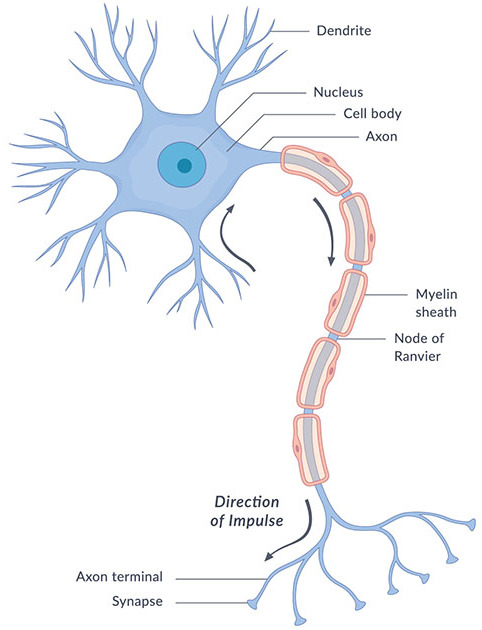

#neuroscience#biology#science#college#education#school#student#medicine#doctors#health#healthcare#neurology#brains#psychology#psychiatry
166 notes
·
View notes
Text


hey! so i'm not convinced that either of you are approaching this discussion in good faith, but on the off chance that you might be willing to hear the other side, i'm replying here (wordcount restriction in comment replies was making me go crazy). also, not too sure why a bad drawing of a fictional robot repping for trans people was the place to discuss this, but whatever, let's go.
so...
there are plenty of athletes with biological advantages who are not disqualified or shunned for them. there are at least 20 documented genetic variations associated with elite athletic status in cisgender people, and both scientific and sporting communities recognize that genetics play a significant role in athletic performance.
Michael Phelps is double-jointed in his shoulders and elbows which aids him in swimming so adeptly. Miguel Induráin, a highly successful cyclist, had a lung capacity of 7.8L compared to the average person's 6L. Eero Mäntyranta, a skiing legend, had a mutation in his erythropoietin receptor gene that increased the amount of oxygen in his blood. Usain Bolt may benefit from his possession of the ACTN3 gene. Tom Sietas, a freediver, has larger lungs than the average person. some of the top basketball players in the world have an advantage with their larger wingspan and hand size compared to their rivals.
nobody bats an eye at these examples, but the few transgender women who have competed are vilified for the combined issue of "biological advantage" and "protecting women." again, let's look at that.
available evidence currently suggests that trans women undergoing testosterone suppression have no obvious biological advantage over cisgender women in sports. cisgender men have higher RBC counts, a quality that is removed within the first few months of T suppression in trans women. loss of strength also occurs with hormonal suppression, but this is not adequately studied yet so we don't know to what extent this occurs. lastly, post-gonad removal, trans women often experience T levels far below those of pre-menopausal cisgender women. overall, there is currently no FIRM basis in science to indicate that trans women undergoing HRT have a consistent and measurable benefit in sports, other than lean body mass and cross-section area that may persist according to a study by jassen et al., 2000. while trans women may retain these higher levels of LBM/CSA, they actually still fall within the normal distribution levels for cis women, only outperforming sedentary cis women. what biological markers might we consider instead then when talking about this? handgrip strength is not a reliable biological proxy. it's more related to hand size than sex. bone density is unreliable as it's not only related to sex, but also to socio-economic position, so it's not strictly sex dimorphic. the only reliable markers we can currently look for are red blood cell count (which, again, decreases with T suppression) and muscle mass when controlled for height and weight.
womens' sports are absolutely under threat, just not in the way that people think. many social factors continue to suppress the value of womens' sports, including sexist discrimination, fewer coaches and teams, classism, racism, and sexual violence. and that's only speaking about cis women. now with an increasing hostility towards transgender people, cis women will be harmed alongside them - body policing, transvestigating, etc. people "respect women" until they think they "aren't women." and what about when they are cis, and you harass them and violate their privacy just to "make sure"? it's horrific. the idea that cis men choose to transition to gain an advantage in womens' sports is a myth. in fact, trans women report an anxiety-inducing climate and constant surveillance along with violence. to think that anyone would willingly put themselves in that kind of situation for shits and gigs or to win a medal is absurd. trans black women especially are heavily discriminated against and face violence often. they would not put themselves at risk of violence, potentially even death, just because they want to win something. they just show up as themselves. and so in saying that, it is a myth that trans women outright dominate and push out cisgender women from sports. trans women LOSING in sports is under-reported in media because it doesn't fit the mainstream hatred of trans people.
the inclusion of trans women should uplift all women. stop policing womens' bodies. and so forth.
would also like to note that, if you don't believe that trans women are real women, and you think that they're all just cis men cosplaying as women... your problem with "trans perverts" is actually just with cis male perverts. the call is coming from inside the house.
TLDR; cis people have had genetic/biological advantages for a long time and have not been disqualified or vilified for them + leave women alone
#transphobia tw#mine#if you want the sources i'll go find them again but theyre easy to find in google scholar#+ other source is my bachelors of science.
17 notes
·
View notes
Text
i saw a video of some preacher guy saying that our T cells and stuff all have nicotine receptors that God placed there and that to activate the immune response and im so confused. i didnt watch the whole video bc i started laughing so hard but im losing my mind
13 notes
·
View notes
Text


September 26th | Blank | 16 days
Dear Lenin,
Today was one of those days where door handles fall hopelessly in love with your T-shirt. Familiar with the type, right? At some point, I had to intervene and actually talk to a door handle! It turned out to be much less of a bad experience than expected—apparently, they listen. Apparently, we’re the only ones deaf in this whole worldly life.
Well, speaking of door handles and their attitudes, I somehow found it metaphorically fitting to relate them to a receptor-ligand interaction, and, oh Lenin, there’s not much you can do about that. So, the story goes as follows: there’s this special type of cell receptor called scavengers. In fact, they form a big family of receptors—a "scavengers reign" (not a science fiction animation series, but rather a nonfiction science thing). Each receptor can bind to a variety of ligands—just like that door handle, falling for different shirts! They call it a multi-ligand receptor. The difference, though, between a scavenger receptor on a macrophage that keeps snagging damaged LDL and that door handle loving my black T-shirt is that the former never stops. And eventually, you end up with fat clustering in places it doesn’t belong.
Lenin, today felt hopeless! But with all that's happening in the world, this letter couldn’t help but be hopeful. Pray for the people, Lenin, and maybe then, remember me!
Yours, with a black T-shirt.
16 notes
·
View notes
Text
STAP-1 to transduce the right signal: adaptors and enzyme association to enhance kinases toward cytokine network
A new study has shed light on the importance of the STAP-1 protein in the activation of some immune cells. The study, published in The Journal of Immunology, investigated how STAP-1 influences the immune response. Researchers have shown that it acts as an intermediary, facilitating communication between different proteins within cells and allowing the transmission of signals from one molecule to…
View On WordPress
#cellular signaling#phospholipase#phospholipids#protein adaptor#protein kinase#second messenger#signal transduction#T cell receptor#T cells#tyrosine kinase
0 notes
Text
Transition journal and measurements update for April!
Spreadsheet is update for April:
And uh. Huh. I don't have much to talk about, to be honest.
I feel like I've finally reached the "steady state" of my transition. I've found an injection dose that works, T is suppressed, I don't have levels to confirm it but as far as estrogen levels are concerned, I feel like they're pretty good and a test would confirm that. My measurements are continuing to trend in femme directions, but they don't tell the full story. I think my body shape has changed a lot visually as well- eg, chest measurements are from fuller, more well formed breasts, my upper body is actually becoming smaller (I talked about this last month as well, there's a few cartilaginous areas that I think have actually shrunk) and everything is just... good!
Socially, I've come out to a lot more people, but its still not 100% "public" information, and I still boymode on the daily. That's gonna change really soon- probably by the end of June.
I guess the only big question left is when I want to start progesterone. Its 100% something I want to do, and my provider has said she can prescribe it whenever... but idk. I'm worried about starting too early. As you might be aware, its recommended to wait 6 months on E to start progesterone. This is because progesterone receptors are only expressed (produced) by your cells when they are signaled by E to do so. If there's no receptors, the progesterone will remain unbound, and is more likely to be metabolized into the potent androgen DHT. There's also anecdotes that its best to wait until you've gotten as much breast development from E as possible before starting prog, and idk. I wanna be cautious. I'm being patient with this.
All of this is unfounded, and largely anecdotal, so take it with a grain of salt.
So I still have no idea when I want to start. Probably not for another couple months. I want to see how far I can get on E alone.
So uh. Yeah. Idk. I don't have much to say. Things are going smoothly, and steadily. I'm taking my summer off but have shit to finish up in lab before then. Once that happens I'll probably actually try to get some nice creative works out, including work on the stuff I've written, and that fully-outlined, partially-scripted podcast I've sidelined for... jesus christ, almost a year now.
Anyway. Toodles.
#also im probs gonna use my “coming out at large” pic as my face reveal pic for this online persona as well#I have something super dramatic planned for it bc I'm a self centered bitch#but ssshhh you didnt hear that#trans journal#trans hrt
46 notes
·
View notes
Text
Interesting Papers for Week 5, 2025
Weak overcomes strong in sensory integration: shading warps the disparity field. Aubuchon, C., Kemp, J., Vishwanath, D., & Domini, F. (2024). Proceedings of the Royal Society B: Biological Sciences, 291(2033).
Functional networks of inhibitory neurons orchestrate synchrony in the hippocampus. Bocchio, M., Vorobyev, A., Sadeh, S., Brustlein, S., Dard, R., Reichinnek, S., … Cossart, R. (2024). PLOS Biology, 22(10), e3002837.
Time-dependent neural arbitration between cue associative and episodic fear memories. Cortese, A., Ohata, R., Alemany-González, M., Kitagawa, N., Imamizu, H., & Koizumi, A. (2024). Nature Communications, 15, 8706.
Neural correlates of memory in a naturalistic spatiotemporal context. Dougherty, M. R., Chang, W., Rudoler, J. H., Katerman, B. S., Halpern, D. J., Bruska, J. P., … Kahana, M. J. (2024). Journal of Experimental Psychology: Learning, Memory, and Cognition, 50(9), 1404–1420.
Massive perturbation of sound representations by anesthesia in the auditory brainstem. Gosselin, E., Bagur, S., & Bathellier, B. (2024). Science Advances, 10(42).
Between-area communication through the lens of within-area neuronal dynamics. Gozel, O., & Doiron, B. (2024). Science Advances, 10(42).
Brainstem inhibitory neurons enhance behavioral feature selectivity by sharpening the tuning of excitatory neurons. He, Y., Chou, X., Lavoie, A., Liu, J., Russo, M., & Liu, B. (2024). Current Biology, 34(20), 4623-4638.e8.
Human motor learning dynamics in high-dimensional tasks. Kamboj, A., Ranganathan, R., Tan, X., & Srivastava, V. (2024). PLOS Computational Biology, 20(10), e1012455.
Distinct functions for beta and alpha bursts in gating of human working memory. Liljefors, J., Almeida, R., Rane, G., Lundström, J. N., Herman, P., & Lundqvist, M. (2024). Nature Communications, 15, 8950.
Regularizing hyperparameters of interacting neural signals in the mouse cortex reflect states of arousal. Lyamzin, D. R., Alamia, A., Abdolrahmani, M., Aoki, R., & Benucci, A. (2024). PLOS Computational Biology, 20(10), e1012478.
Differential role of NMDA receptors in hippocampal‐dependent spatial memory and plasticity in juvenile male and female rats. Narattil, N. R., & Maroun, M. (2024). Hippocampus, 34(11), 564–574.
Dynamic patterns of functional connectivity in the human brain underlie individual memory formation. Phan, A. T., Xie, W., Chapeton, J. I., Inati, S. K., & Zaghloul, K. A. (2024). Nature Communications, 15, 8969.
Computational processes of simultaneous learning of stochasticity and volatility in humans. Piray, P., & Daw, N. D. (2024). Nature Communications, 15, 9073.
Ordinal information, but not metric information, matters in binding feature with depth location in three-dimensional contexts. Qian, J., Zheng, T., & Li, B. (2024). Journal of Experimental Psychology: Human Perception and Performance, 50(11), 1083–1099.
Hippocampal storage and recall of neocortical “What”–“Where” representations. Rolls, E. T., Zhang, C., & Feng, J. (2024). Hippocampus, 34(11), 608–624.
Roles and interplay of reinforcement-based and error-based processes during reaching and gait in neurotypical adults and individuals with Parkinson’s disease. Roth, A. M., Buggeln, J. H., Hoh, J. E., Wood, J. M., Sullivan, S. R., Ngo, T. T., … Cashaback, J. G. A. (2024). PLOS Computational Biology, 20(10), e1012474.
Integration of rate and phase codes by hippocampal cell-assemblies supports flexible encoding of spatiotemporal context. Russo, E., Becker, N., Domanski, A. P. F., Howe, T., Freud, K., Durstewitz, D., & Jones, M. W. (2024). Nature Communications, 15, 8880.
The one exception: The impact of statistical regularities on explicit sense of agency. Seubert, O., van der Wel, R., Reis, M., Pfister, R., & Schwarz, K. A. (2024). Journal of Experimental Psychology: Human Perception and Performance, 50(11), 1067–1082.
The brain hierarchically represents the past and future during multistep anticipation. Tarder-Stoll, H., Baldassano, C., & Aly, M. (2024). Nature Communications, 15, 9094.
Expectancy-related changes in firing of dopamine neurons depend on hippocampus. Zhang, Z., Takahashi, Y. K., Montesinos-Cartegena, M., Kahnt, T., Langdon, A. J., & Schoenbaum, G. (2024). Nature Communications, 15, 8911.
#neuroscience#science#research#brain science#scientific publications#cognitive science#neurobiology#cognition#psychophysics#neurons#neural computation#neural networks#computational neuroscience
8 notes
·
View notes